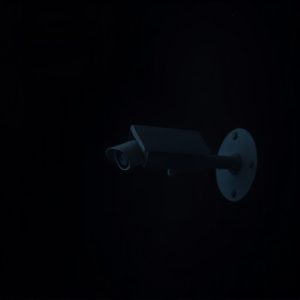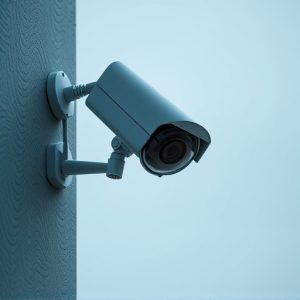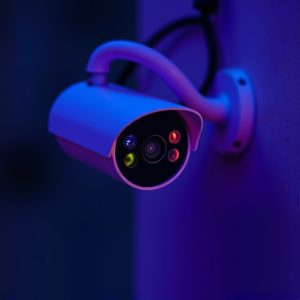Securing Spaces with Stealth: A Guide to Hidden Security Camera Systems
Hidden security cameras are essential tools for discreet monitoring, offering high-definition survei…….
Hidden security cameras are essential tools for discreet monitoring, offering high-definition surveillance with features like night vision and motion detection that optimize storage and battery life, especially in wireless models. Modern hidden cameras blend into environments, integrating into everyday objects, and have evolved to provide superior imaging quality while remaining inconspicuous. They often come equipped with remote access capabilities for smartphones or computers, two-way audio functionality, and strong encryption to protect data. The deployment of these cameras requires careful legal and ethical considerations, including adherence to privacy laws and obtaining consent from individuals under surveillance. It's crucial to install cameras strategically for optimal coverage, considering factors like lens capabilities and lighting conditions, while ensuring they are out of sight yet within effective viewing angles. Selecting a high-quality hidden camera from trusted brands like Hiseeu, Falcon Zero, Spypixel, Amcrest, and Foscam can enhance your surveillance system's effectiveness, with various models catering to different needs, whether for professional or personal use.
Hidden security cameras have become a cornerstone in safeguarding personal and commercial spaces, offering covert protection without compromising aesthetics. This article delves into the integration and effectiveness of these discreet devices, exploring their evolution from simple deterrents to sophisticated monitoring systems. It also addresses critical legal implications, ensuring users navigate compliance confidently. With insights into top brands and models, readers will discover best practices for placement and installation to maximize surveillance capabilities. Join us as we unveil the hidden world of security cameras, your silent guardians in an increasingly complex environment.
Understanding Hidden Security Cameras: Essential Features and Functions
Hidden security cameras serve as a critical tool in safeguarding private and commercial spaces by discreetly monitoring activities within their view without drawing attention to themselves. These devices are designed with a focus on minimal visual impact, allowing them to blend seamlessly into the environment, whether it’s a home, office, or retail space. When selecting a hidden security camera, key features to consider include high-definition video recording capabilities for clear image capture, night vision for round-the-clock surveillance, and motion detection to trigger recording only when movement is detected, thus conserving storage space and battery life if the camera is wireless. Additionally, advanced models may offer remote access via apps or software, enabling users to view live footage or review recorded footage from a smartphone or computer, ensuring peace of mind while away from the premises. It’s also important for these cameras to have robust encryption methods to protect data privacy and integrity. Hidden security cameras with two-way audio can even allow for verbal communication from a remote location, enhancing their functionality as a deterrent and an interactive monitoring device. By carefully selecting a hidden security camera that meets these essential features and functions, users can significantly improve the security of their environments without compromising on aesthetics or drawing unwanted attention to the surveillance system in place.
The Evolution of Stealthy Surveillance: From Discreet Cameras to Advanced Monitoring
The field of surveillance has undergone a significant transformation over the years, with hidden security cameras playing an increasingly pivotal role in this evolution. Early iterations of covert surveillance relied on basic pinhole cameras, which were rudimentary yet effective at capturing visuals undetected. These rudimentary devices laid the groundwork for today’s advanced spy cams, which are engineered to blend seamlessly into environments, often indistinguishable from everyday objects. Modern hidden security cameras boast sophisticated technologies such as high-resolution imaging and motion detection capabilities, all while maintaining their inconspicuous nature. They are now compact enough to be integrated into household items like clocks, picture frames, smoke detectors, and even toys, making them an invaluable tool for both security professionals and homeowners alike. The miniaturization of these devices has not come at the expense of quality; in fact, the imaging from hidden security cameras is often superior to that of their overt counterparts, ensuring clear and detailed footage for security personnel to analyze. This progression represents a marked shift from the more visible surveillance methods of the past, signaling an era where security and privacy can coexist within the realm of advanced monitoring solutions. As these technologies continue to advance, the line between what is perceived as a security measure and a commonplace device becomes increasingly indistinguishable, marking a new chapter in the world of surveillance technology.
Legal Considerations When Implementing Hidden Security Cameras
The deployment of hidden security cameras must navigate a complex web of legal considerations to comply with privacy laws and ethical standards. It is imperative for individuals or entities installing such cameras to understand and adhere to local, state, and federal regulations regarding surveillance. These laws vary by jurisdiction but generally require consent from individuals who may be recorded. The absence of visible cameras necessitates clear signage informing individuals that they are entering a monitored area, ensuring transparency and respect for privacy rights. Furthermore, the use of hidden security cameras should be limited to legitimate purposes such as protecting private property or public spaces, with careful consideration given to the balance between security and individual privacy. Regular audits and reviews of surveillance practices are essential to ensure compliance with all applicable laws, maintaining trust and legitimacy in the use of hidden security cameras.
Best Practices for Placing and Installing Hidden Security Cameras
When implementing a covert surveillance system with hidden security cameras, it’s crucial to prioritize the camera’s discretion while ensuring optimal coverage and visibility for capturing clear footage. The placement of these devices should align with strategic vantage points that offer unobstructed views of critical areas without drawing attention. Cameras ought to be installed at heights where they can capture a wide field of view without being easily spotted by individuals who may pose a security threat. Additionally, the chosen locations should avoid direct sunlight or other light sources that could create glare or wash out the footage. It’s also essential to consider the camera’s lens capabilities and their directionality; placing a hidden camera with a wide-angle lens in a corner can maximize its coverage potential.
Furthermore, integrating hidden security cameras into environments like homes, businesses, or sensitive facilities necessitates careful planning. The cameras should be installed out of sight but still within lines of sight that are not commonly monitored by the general public. Network considerations, such as ensuring a strong Wi-Fi signal without interference, and power supply access, must also be factored into the installation process. Regular maintenance checks should be scheduled to verify the cameras’ operational status and to update or replace them as technology advances. Adhering to privacy laws and respecting individuals’ expectations of privacy are also paramount when deploying hidden security cameras, ensuring their use is both effective and ethically responsible.
Top Brands and Models of Hidden Security Cameras for Effective Surveillance Solutions
When securing your premises with hidden surveillance cameras, opting for top-brand models can make a significant difference in capturing high-quality footage discreetly. One such brand is Hiseeu, whose wireless hidden cameras offer excellent clarity and are designed to blend seamlessly into various environments, from homes to offices. Their ‘Smartest Wireless Hidden Camera’ model is particularly noteworthy for its motion-activated recording and real-time alert features. Another reputable choice is the Falcon Zero series, with their compact Pinhole Cameras that can be easily hidden within any room. These devices boast a long battery life, making them ideal for locations where running power to the camera might be impractical or impossible.
Spypixel stands out with its ‘Wireless Hidden Camera with SD Card’, which is incredibly small and can be placed in areas where large cameras would draw attention. The footage it captures is sharp and detailed, thanks to its high-resolution sensor. For those seeking a more advanced option, Amcrest’s ProHD 1080p Wireless Hidden Camera System provides professional-grade surveillance with remote viewing capabilities via an app. This system ensures that users can keep a watchful eye on their property without the cameras announcing their presence. Similarly, Foscam’s R2 Bullet Camera, while not entirely hidden, is designed with a low-profile look and offers robust features like night vision and cloud storage integration. When selecting a hidden security camera, it’s crucial to consider the specific needs of your surveillance strategy, including the environment, intended use, and the level of resolution required for effective monitoring.


